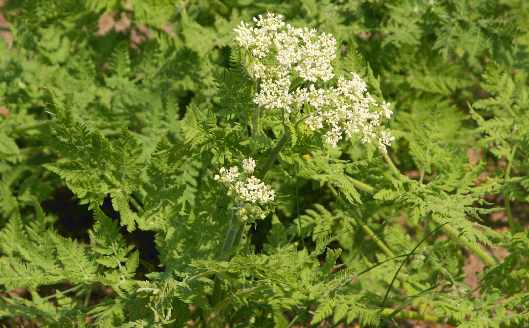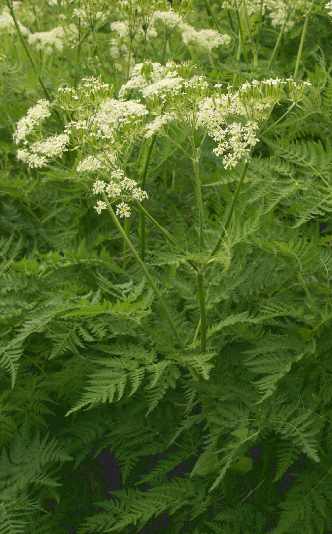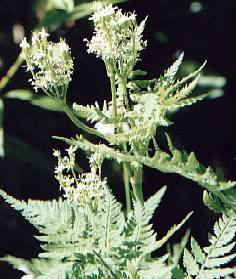
|
| Umbel of cicely flowers |
Because of the sweet fragrance, cicely fruits are a good substitute for anise, fennel of even licorice; the leaves may be used instead of chervil, although it will probably take some time to get used to their much more dominant aroma. Yet who comes to like the licorice-like taste, will want to combine cicely with the fines herbes of French cuisine (see chives).
In Scandinavia, cicely is common to flavour stewed fruits. Cicely fruits and
stalks may, furthermore, help to save sugar because of their naturally sweet
taste.





